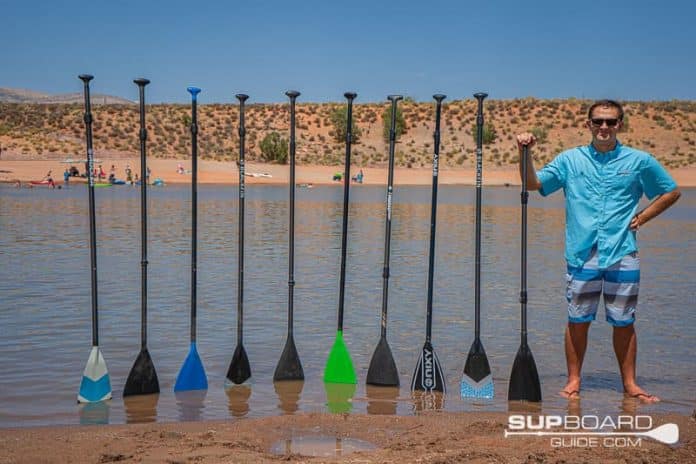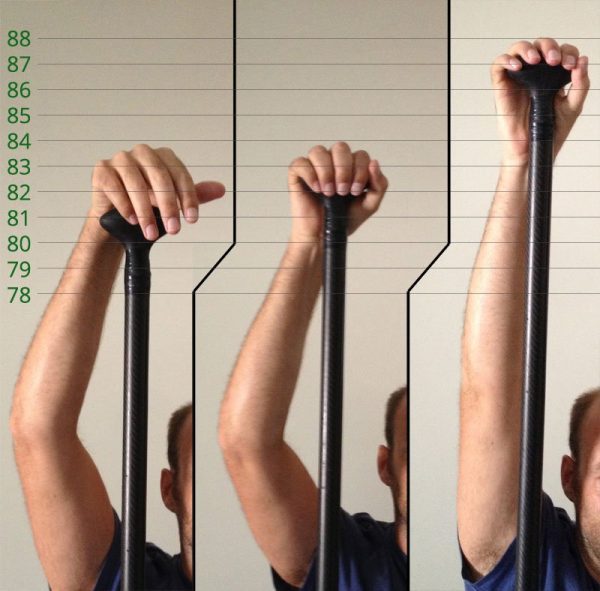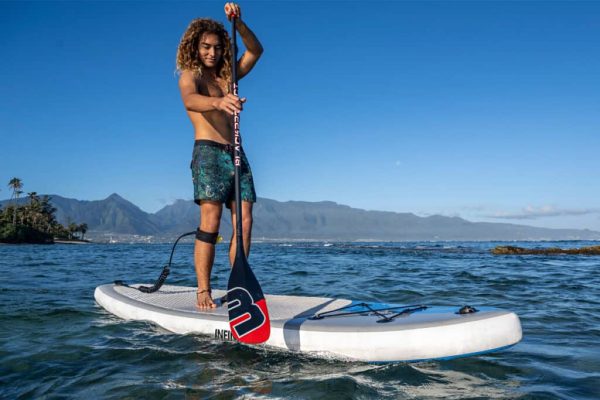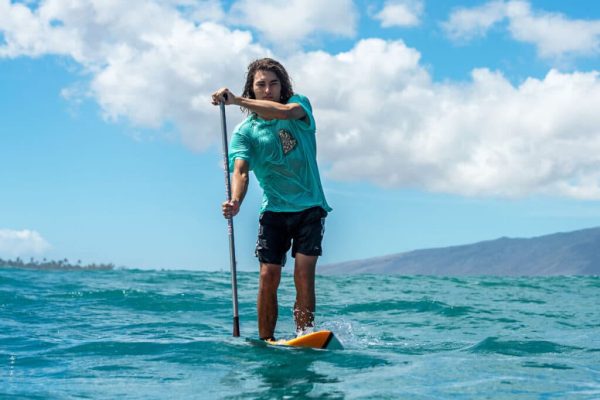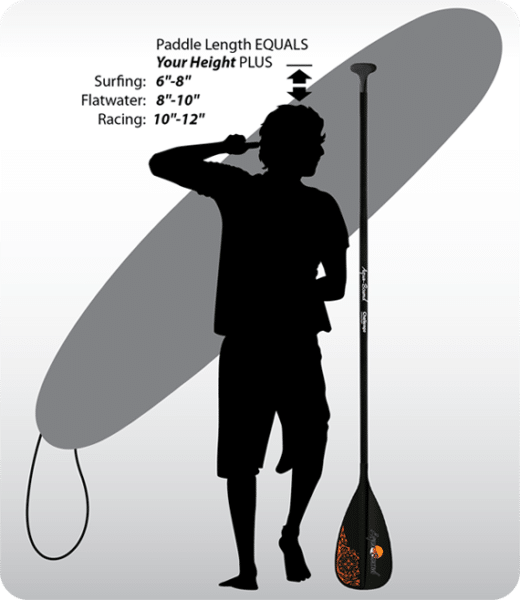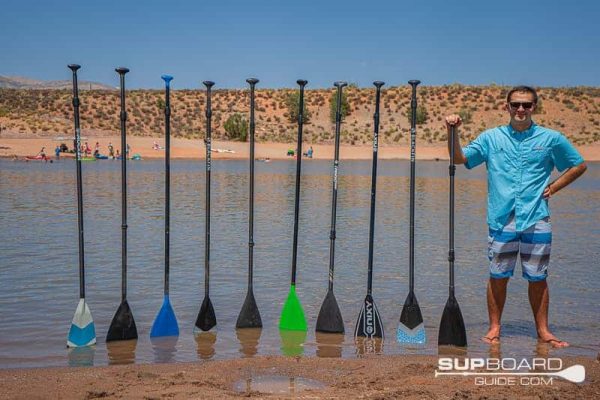Have you ever wondered if a sup paddle could actually be too long? Well, we’re here to give you some insight on this common question. When it comes to stand-up paddleboarding (SUP), the length of your paddle plays a crucial role in your overall experience on the water. While a longer paddle may provide more power and efficiency, it may not always be the best choice for every paddler. In this article, we’ll explore the factors to consider when determining the ideal length for your SUP paddle and debunk the myth of whether a sup paddle can indeed be too long. So, grab a cup of your favorite beverage and get ready to learn everything you need to know about finding the perfect paddle length for your SUP adventures.
Factors to Consider
When it comes to choosing the right SUP (stand-up paddleboard) paddle, there are several factors that need to be taken into consideration. The length of the paddle is one of the most important factors to consider, as it can greatly affect your performance on the water. In this article, we will explore the relationship between paddle length and various factors such as height, paddle type, experience level, and water conditions. By understanding these factors, you will be able to select the ideal paddle length that suits your needs and enhances your paddling experience.
Paddle Length and Height
One of the key factors to consider when determining the ideal paddle length is your height. The length of the paddle should be proportional to your height in order to achieve optimal paddle performance. If the paddle is too long or too short, it can have negative effects on your paddling technique and overall experience on the water.
Paddle Length and Paddle Type
The type of paddle you use is another important consideration when determining the ideal paddle length. Different types of paddles are designed for specific SUP activities such as racing, touring, surfing, or fitness paddling. Each type of paddle may have different length recommendations based on the specific requirements of the activity. It is important to choose a paddle length that is suitable for the type of paddling you plan to do.
Paddle Length and Experience Level
Your experience level as a paddleboarder also plays a role in determining the ideal paddle length. Beginners may benefit from using a slightly shorter paddle to ensure better maneuverability and control. On the other hand, experienced paddlers may opt for a longer paddle to maximize power and speed. It is important to consider your skill level and choose a paddle length that matches your experience on the water.
This image is property of greenwatersports.com.
Paddle Length and Water Conditions
The water conditions in which you paddle can also influence the ideal paddle length. If you frequently paddle on calm, flat water, a shorter paddle may be sufficient. However, if you often encounter choppy or rough conditions, a longer paddle may provide increased stability and control. It is important to take into account the specific water conditions you typically encounter and select a paddle length accordingly.
Ideal Paddle Length
Now that we have explored the various factors to consider, let’s delve into the ideal paddle length for your SUP adventures. While there isn’t a one-size-fits-all answer, there are some guidelines to help you determine the ideal paddle length for your height and other considerations.
Height-Adjusted Formula
A commonly used method for determining the ideal paddle length is the height-adjusted formula. This formula takes into account your height and provides a recommended paddle length range. As a general rule of thumb, the paddle length should be roughly 8-10 inches taller than your height. However, this is just a starting point and should be used as a guideline rather than an absolute measurement.
Paddle Length and Stroke Efficiency
An important consideration when determining the ideal paddle length is stroke efficiency. The paddle should allow you to achieve an efficient and effective stroke, maximizing forward propulsion while minimizing energy expenditure. A paddle that is too long may require excessive effort and result in an inefficient stroke, leading to decreased performance and fatigue.
This image is property of blackprojectsup.com.
Paddle Length and Stability
Stability is another crucial factor to consider when selecting the ideal paddle length. The length of the paddle can impact your stability on the board. A paddle that is too long may cause instability, making it difficult to maintain balance and control. Conversely, a paddle that is too short may limit your stability, especially in choppy or rough water conditions. It is important to find a balance that provides optimal stability for your paddling style and water conditions.
Paddle Length and Power Output
The length of the paddle can also affect your power output on the water. A longer paddle allows for increased leverage, providing more power and speed. However, it is important to find a balance between power and control. A paddle that is too long may require more energy to paddle and can lead to early fatigue. It is important to choose a paddle length that allows you to maintain a consistent and efficient paddling technique while generating enough power for your desired level of performance.
Effects of a Paddle Too Long
Using a paddle that is too long can have a negative impact on your overall SUP experience. Let’s explore some of the potential effects of using a paddle that exceeds the optimal length for your height and paddling style.
Decreased Maneuverability
One of the effects of using a paddle that is too long is decreased maneuverability. A longer paddle can make it more challenging to execute quick turns, navigate tight spots, or maneuver through obstacles. This can limit your ability to effectively control your paddleboard and result in a less enjoyable paddling experience.
This image is property of blackprojectsup.com.
Excessive Fatigue
Using a paddle that is too long can also lead to excessive fatigue. The increased length requires more effort to paddle, which can quickly tire out your muscles. Paddling with excessive fatigue not only diminishes your performance but also increases the risk of injury. It is essential to choose a paddle length that allows you to maintain a comfortable and sustainable paddling rhythm without causing muscle fatigue.
Loss of Efficiency
Paddling with a paddle that exceeds the ideal length can lead to a loss of efficiency. The increased length may result in a less efficient stroke, requiring more energy expenditure to achieve the same level of forward propulsion. This not only affects your performance but also hinders your ability to paddle efficiently for extended periods of time.
Potential Overuse Injuries
Using a paddle that is too long can potentially lead to overuse injuries. The excessive strain placed on your muscles and joints due to the extended length can increase the risk of repetitive stress injuries, such as tendonitis or muscle strains. It is important to choose a paddle length that promotes proper biomechanics and reduces the risk of overuse injuries.
Effects of a Paddle Too Short
Just as using a paddle that is too long can have negative effects, using a paddle that is too short can also impact your paddling experience. Let’s explore some of the potential effects of using a paddle that falls below the optimal length for your height and paddling style.
This image is property of cdn.shopify.com.
Decreased Reach
Using a paddle that is too short can result in decreased reach. This can limit your ability to effectively enter the paddle into the water and propel yourself forward. A shorter paddle may also restrict your ability to reach the water when making wider strokes, reducing your overall paddling efficiency.
Inefficient Paddle Entry
An insufficiently long paddle may lead to an inefficient paddle entry. The paddle may not be able to fully immerse in the water, causing a less effective stroke and reduced forward propulsion. This can result in a paddling experience that requires excessive effort while yielding minimal results.
Limited Stability
Using a paddle that is too short can compromise your stability on the water. The inadequate length may decrease your ability to maintain balance, especially in challenging water conditions. This lack of stability can impact your confidence on the paddleboard and potentially lead to increased falls or difficulty staying upright.
Reduced Power
Using a paddle that falls below the ideal length can also reduce your power output. A shorter paddle limits your ability to leverage your body weight and generate maximum power during each stroke. This can significantly impact your ability to maintain speed and propel yourself efficiently through the water.
This image is property of www.supboardguide.com.
Choosing the Right Paddle Length
Now that we have explored the potential effects of using a paddle that is too long or too short, let’s discuss how to choose the right paddle length for your specific needs. By taking into account several factors, you can make an informed decision that enhances your paddling experience.
Consider Your Height and SUP Type
Your height serves as a valuable starting point when determining the ideal paddle length. Remember the height-adjusted formula of selecting a paddle length that is roughly 8-10 inches taller than your height. Additionally, consider the type of SUP activity you plan to engage in. Different types of paddling may involve specific length recommendations to optimize your performance.
Consider Your Experience Level
Your experience level as a paddleboarder is an important factor to consider when selecting the right paddle length. Beginners may benefit from using a slightly shorter paddle to enhance maneuverability and control. As you gain more experience and develop better paddling technique, you may opt for a longer paddle to increase power and speed.
Consider the Water Conditions
The water conditions in which you typically paddle should also influence your decision on paddle length. If you predominantly paddle on calm, flat water, a shorter paddle may be suitable. However, if you often encounter choppy or rough conditions, a longer paddle may provide the stability and control needed to navigate through challenging waters.
Test Different Paddle Lengths
To ensure you select the most suitable paddle length, it is helpful to try out various lengths to see how they feel on the water. Renting or borrowing paddles of different lengths allows you to compare their performance and comfort. Take note of how each length affects your paddling technique, stroke efficiency, and overall enjoyment.
Seek Expert Advice
If you are still unsure about the ideal paddle length for you, it is always a good idea to seek expert advice. Visit a local paddle shop or consult with experienced paddleboarders who can provide personalized recommendations based on your height, paddling goals, and water conditions you frequent. Their expertise can help you make a more informed decision and narrow down your options.
Paddle Length Adjustment
After selecting a paddle length, you may find that further adjustments are necessary to achieve the perfect fit. There are a few options for paddle length adjustment, depending on the type of paddle you have.
Adjustable Paddle Lengths
Many paddles on the market feature adjustable lengths, allowing you to fine-tune the paddle to your desired specifications. This flexibility is particularly useful if multiple people of varying heights will be using the same paddle or if you enjoy experimenting with different paddle lengths.
Cutting or Extending a Paddle
If your paddle does not offer adjustable length options, you may consider cutting or extending the paddle shaft to achieve the desired length. This option requires careful measurement and precision, as altering the paddle length incorrectly can compromise its integrity and performance. Seek professional assistance or consult reliable sources for guidance if you choose to modify your paddle.
Other Paddle Considerations
While paddle length is crucial, there are other factors to consider when selecting a SUP paddle. Pay attention to the following features to ensure maximum comfort and performance on the water:
Paddle Material
Paddles can be made from various materials such as carbon fiber, fiberglass, aluminum, or plastic. Each material offers different characteristics in terms of weight, durability, and performance. Consider your budget, paddling style, and desired paddle performance when selecting the material that suits your needs.
Blade Shape and Size
The shape and size of the paddle blade can significantly affect your stroke efficiency and power output. Blades come in different shapes, including teardrop, rectangular, and dihedral. Additionally, blades can vary in size, with larger blades generating more power but requiring more effort. It is essential to find a blade shape and size that complements your paddling style and helps you achieve your desired performance.
Grip and Shaft Diameter
The grip and shaft diameter of the paddle can impact your comfort and control while paddling. Grips may feature ergonomic designs or specific textures to enhance grip and reduce fatigue. Shaft diameters can vary to accommodate different hand sizes and preferences. Prioritize comfort and ease of use when selecting the grip and shaft diameter that suits your needs.
Weight and Balance
The weight and balance of the paddle can also influence your paddling experience. Lighter paddles can ensure less fatigue during extended paddling sessions. Additionally, finding a well-balanced paddle that feels comfortable in your hands can enhance your overall control and enjoyment on the water.
Final Thoughts
Selecting the ideal paddle length is a crucial decision that can greatly impact your stand-up paddleboarding experience. Consider your height, SUP type, experience level, and water conditions before making a decision. Test different paddle lengths and seek expert advice if needed. Remember to also pay attention to other paddle features such as material, blade shape and size, grip and shaft diameter, as well as weight and balance. Regular evaluations of your paddle’s performance and your own preferences can help you fine-tune your equipment and continue to enjoy the sport to its fullest. Happy paddling!

